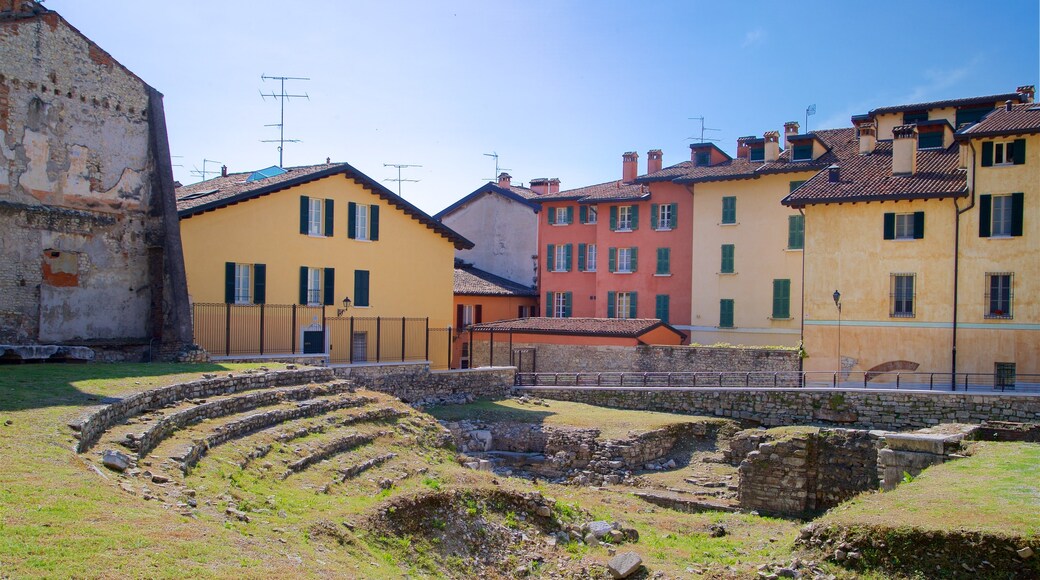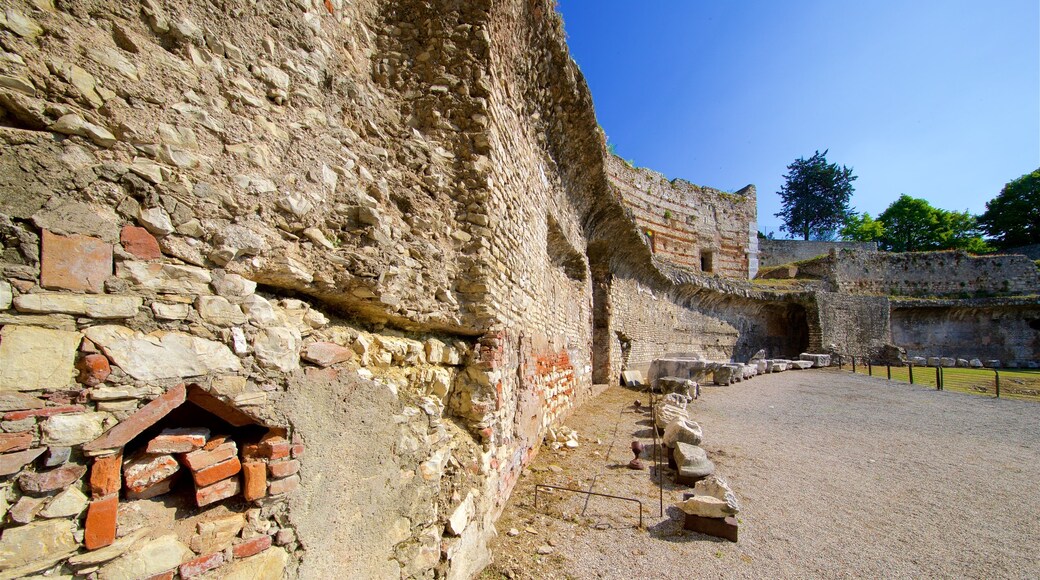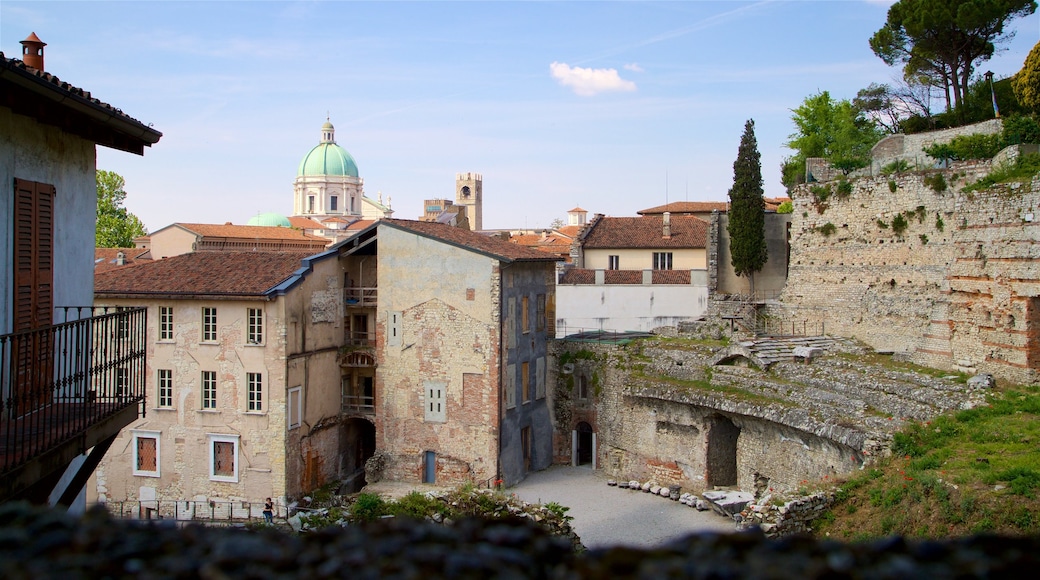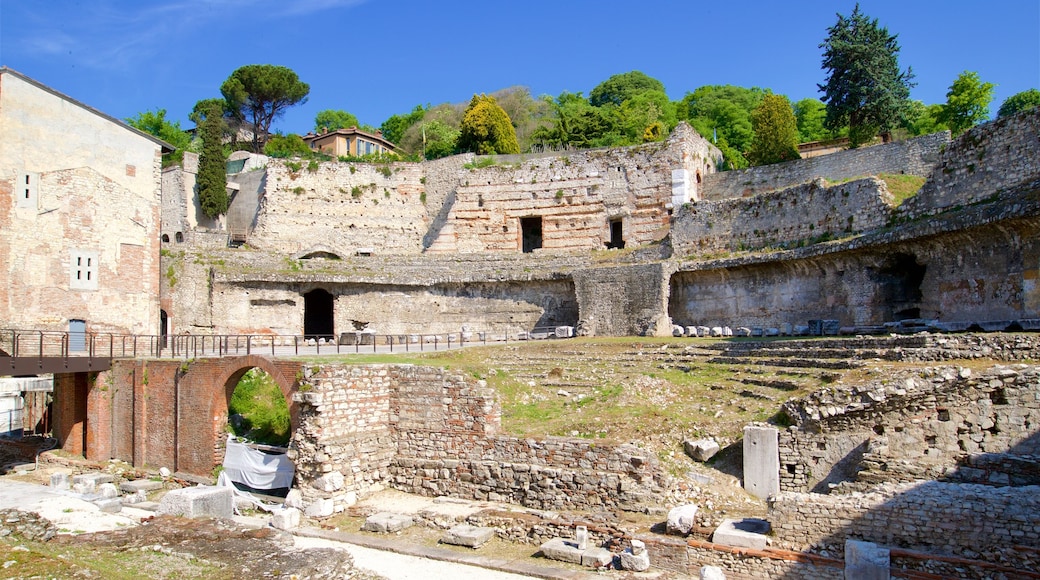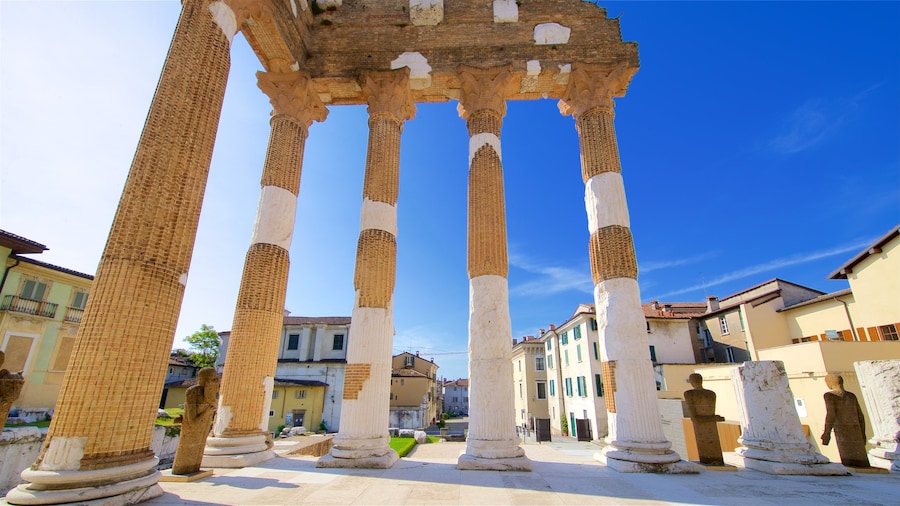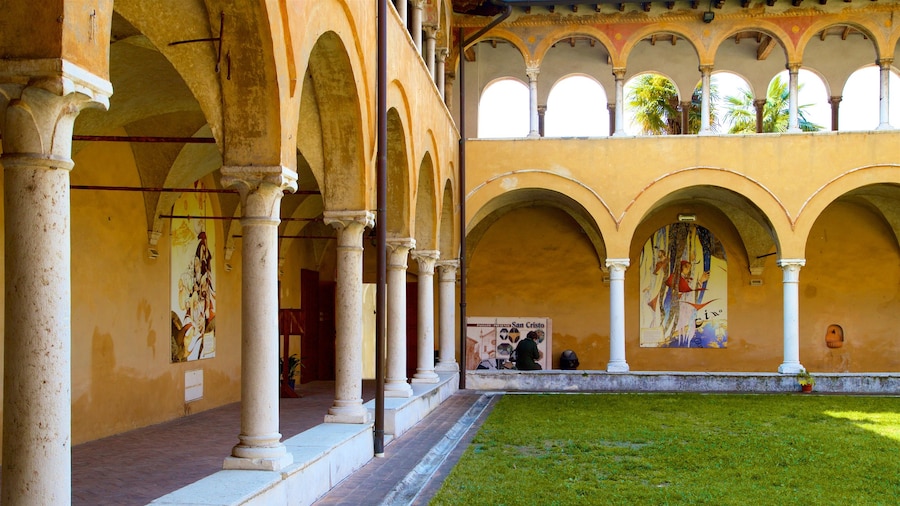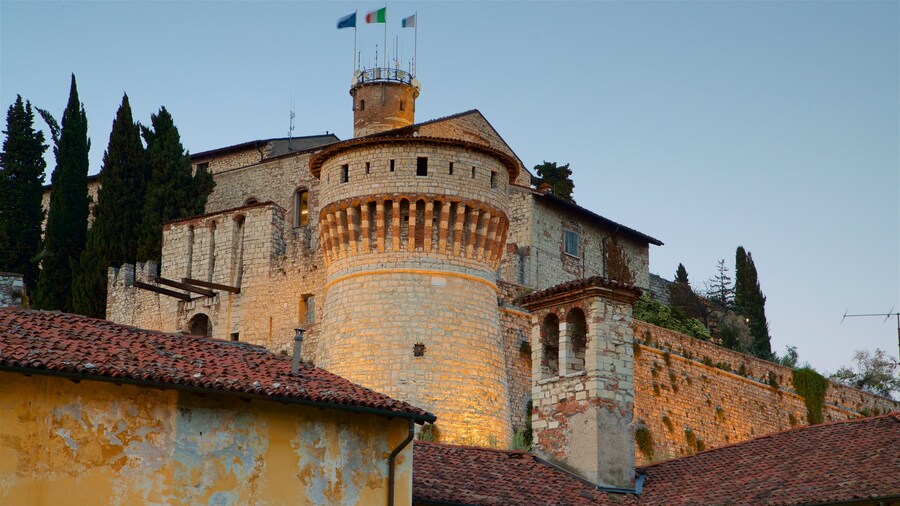Stand on the stage of Brescia’s Roman Theatre, a 2,000-year-old ruin in the heart of the old city of Roman Brixia. Alongside the Roman Forum and Tempio Capitolino, the Roman Theatre is part of the UNESCO World Heritage-listed area that protects the city’s ancient Roman and Longobard heritage. Explore the immense Roman Theatre and learn about the history of this fascinating archaeological site.
The theater was built during the Flavian period between A.D. 69 and 96 and enjoyed its peak during the 2nd century. Public gatherings, theatrical productions and special events would have been held here, possibly to a crowd of thousands. Stroll around the theater’s stage area and imagine how it would have appeared almost two millennia ago. The theater was partially destroyed in the 5th and 6th centuries, but it is still possible to see the architectural form of the ancient ruin.
Climb up to the Vicolo del Fontanone to view the theater from above. From here you can see the vaults of the vomitori, which was the entrance used by the general public. The levels below show the stage and the orchestra pit. Look across the southern side of the theater to see how it once overlooked the decumano massimo, which was the former main street of the area. Note the original medolo stone and marble construction of the theater, as well as the large bricks in its upper levels.
To the west of the theater look for the Gambara-Maggi Palace. This 14th-century palazzo separates the Roman Theater and Tempio Capitolino. The theater is accessible from the temple via the pretty aula di pilastrini, which is a passageway with three naves and a collection of narrow pillars.
The Roman Theatre is easy to access via Brescia’s Via Musei (Museum Row), which is less than a 10-minute walk from the subway station at Piazza della Vittoria. Visit the Roman Museum to learn more about the history of the site and the people who would have attended the theater in ancient times. There is a fee to enter the Archaeological Park, which includes access to the Roman Forum and Tempio Capitolino.
